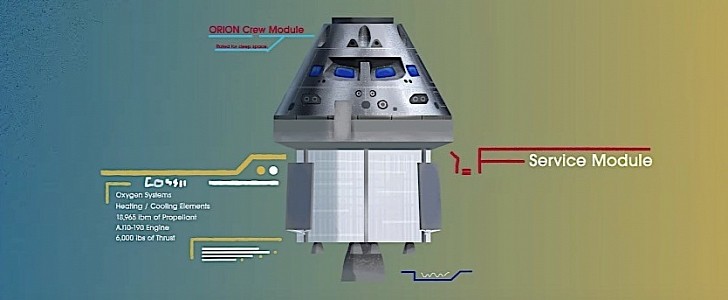It’s called the European Service Module (ESM), and it’s a big part of the Orion spaceship currently being put together by NASA and its partners under the Artemis program. Made, obviously, in Europe, it is one of many contributions the Old Continent will have to this truly global effort to return to the Moon.
ESM is an unpressurized cylinder tasked with providing astronauts with the needed electricity, water, oxygen and nitrogen, while keeping the temperatures bearable for human beings. It is, in fact, the assembly that contains the engine of the craft, and the first one was already delivered to NASA for fitting on the first Orion spacecraft, while a second is currently being put together in Germany.
Back in August 2020, ArianeGroup, one of the continent’s major aerospace companies, was selected to provide the 24 attitude control engines, two high-pressure regulators, various fuel valves, four fuel tanks, and two high-pressure helium tanks for pressurizing the fuel tanks in zero-gravity conditions, for ESM number 3.
This is a major development, as this third ESM is destined for Artemis III, the mission that will take humans back on the Moon sometime in 2024. The preceding two missions will only go to the Moon, without touching down, the first with no crew (Artemis I, 2021), and the second with people on board (Artemis II, 2023).
“When the first astronauts of the Artemis mission walk on the surface of the Moon in 2024, it will be in part thanks to the expertise of ArianeGroup in Germany and in France,” said in a statement Stefan Haessler, head of Orbital Propulsion at ArianeGroup.
"Our know-how and our propulsion systems have flown on numerous exploration missions. By collaborating in the construction of the third service module together with Airbus Defence and Space, we demonstrate our know-how in the field of crewed flight. We are delighted to place our unique skills at the disposal of this transatlantic Moon mission. All the ArianeGroup employees are extremely proud to be able to contribute to the success of this exceptional human adventure.”
Back in August 2020, ArianeGroup, one of the continent’s major aerospace companies, was selected to provide the 24 attitude control engines, two high-pressure regulators, various fuel valves, four fuel tanks, and two high-pressure helium tanks for pressurizing the fuel tanks in zero-gravity conditions, for ESM number 3.
This is a major development, as this third ESM is destined for Artemis III, the mission that will take humans back on the Moon sometime in 2024. The preceding two missions will only go to the Moon, without touching down, the first with no crew (Artemis I, 2021), and the second with people on board (Artemis II, 2023).
“When the first astronauts of the Artemis mission walk on the surface of the Moon in 2024, it will be in part thanks to the expertise of ArianeGroup in Germany and in France,” said in a statement Stefan Haessler, head of Orbital Propulsion at ArianeGroup.
"Our know-how and our propulsion systems have flown on numerous exploration missions. By collaborating in the construction of the third service module together with Airbus Defence and Space, we demonstrate our know-how in the field of crewed flight. We are delighted to place our unique skills at the disposal of this transatlantic Moon mission. All the ArianeGroup employees are extremely proud to be able to contribute to the success of this exceptional human adventure.”


























